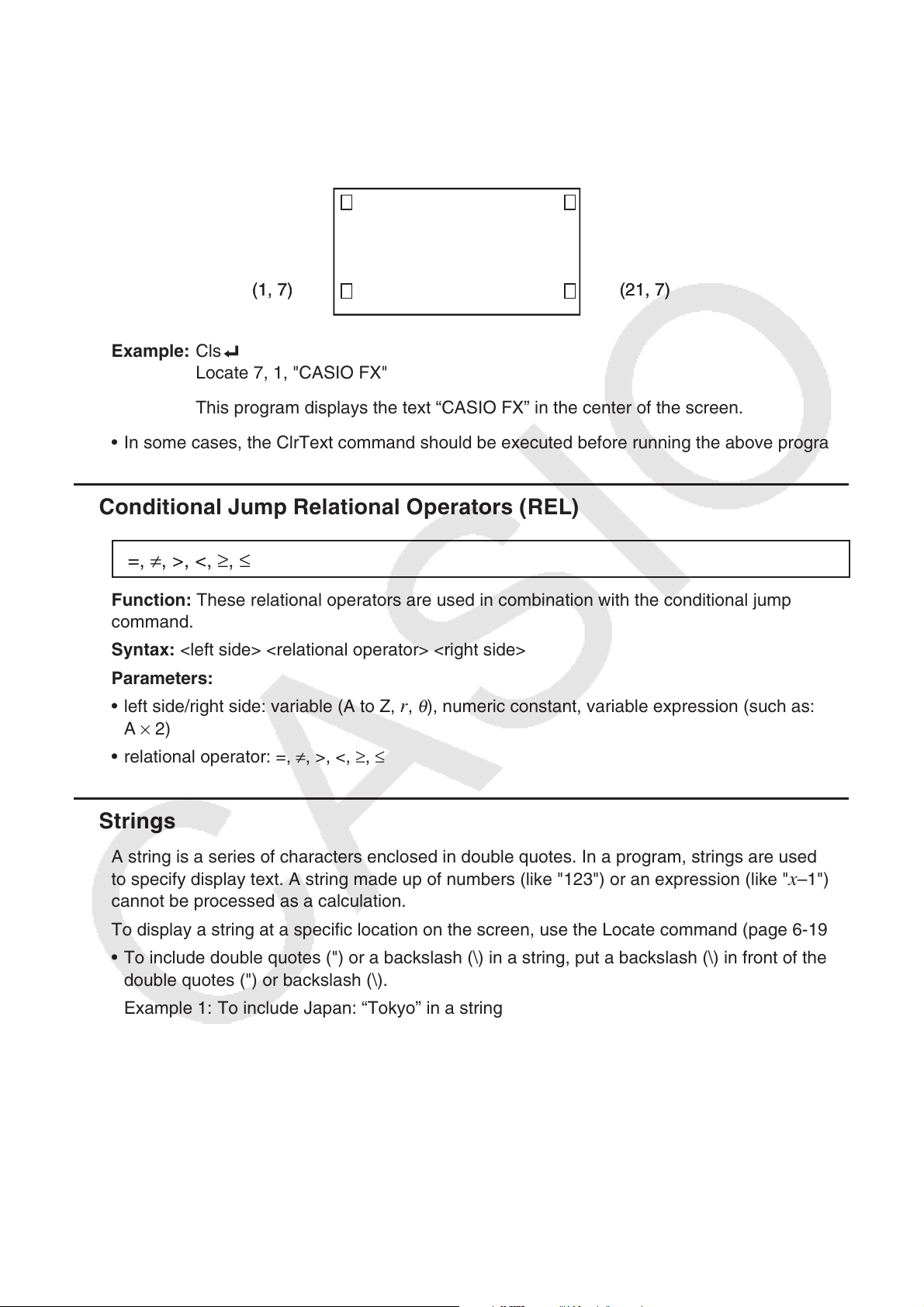Loading ...
Loading ...
Loading ...

6-20
Description:
• This command displays values (including variable contents) or text at a specific location on
the text screen. If there is a calculation input, that calculation result is displayed.
• The line is designated by a value from 1 to 7, while the column is designated by a value from
1 to 21.
Example: Cls _
Locate 7, 1, "CASIO FX"
This program displays the text “CASIO FX” in the center of the screen.
• In some cases, the ClrText command should be executed before running the above program.
k Conditional Jump Relational Operators (REL)
=, ≠ ,>,<,≥ , ≤
Function: These relational operators are used in combination with the conditional jump
command.
Syntax: <left side> <relational operator> <right side>
Parameters:
• left side/right side: variable (A to Z,
r,
θ
), numeric constant, variable expression (such as:
A × 2)
• relational operator: =, ≠ , >, <, ≥ , ≤
k Strings
A string is a series of characters enclosed in double quotes. In a program, strings are used
to specify display text. A string made up of numbers (like "123") or an expression (like " x–1")
cannot be processed as a calculation.
To display a string at a specific location on the screen, use the Locate command (page 6-19).
• To include double quotes (") or a backslash (\) in a string, put a backslash (\) in front of the
double quotes (") or backslash (\).
Example 1: To include Japan: “Tokyo” in a string
"Japan:\"Tokyo\""
Example 2: To include main\abc in a string
"main\\abc"
You can input a backslash from the menu that appears when you press 6(CHAR)2(SYBL)
in the PRGM mode, or from the String category of the catalog that appears when you press
!a(CATALOG).
• You can assign strings to string memory (Str 1 through Str 20). For details about strings, see
“String Memory” (page 3-5).
← (21, 1)
← (21, 7)
(1, 1) →
(1, 7) →
← (21, 1)
← (21, 7)
(1, 1) →
(1, 7) →
Loading ...
Loading ...
Loading ...